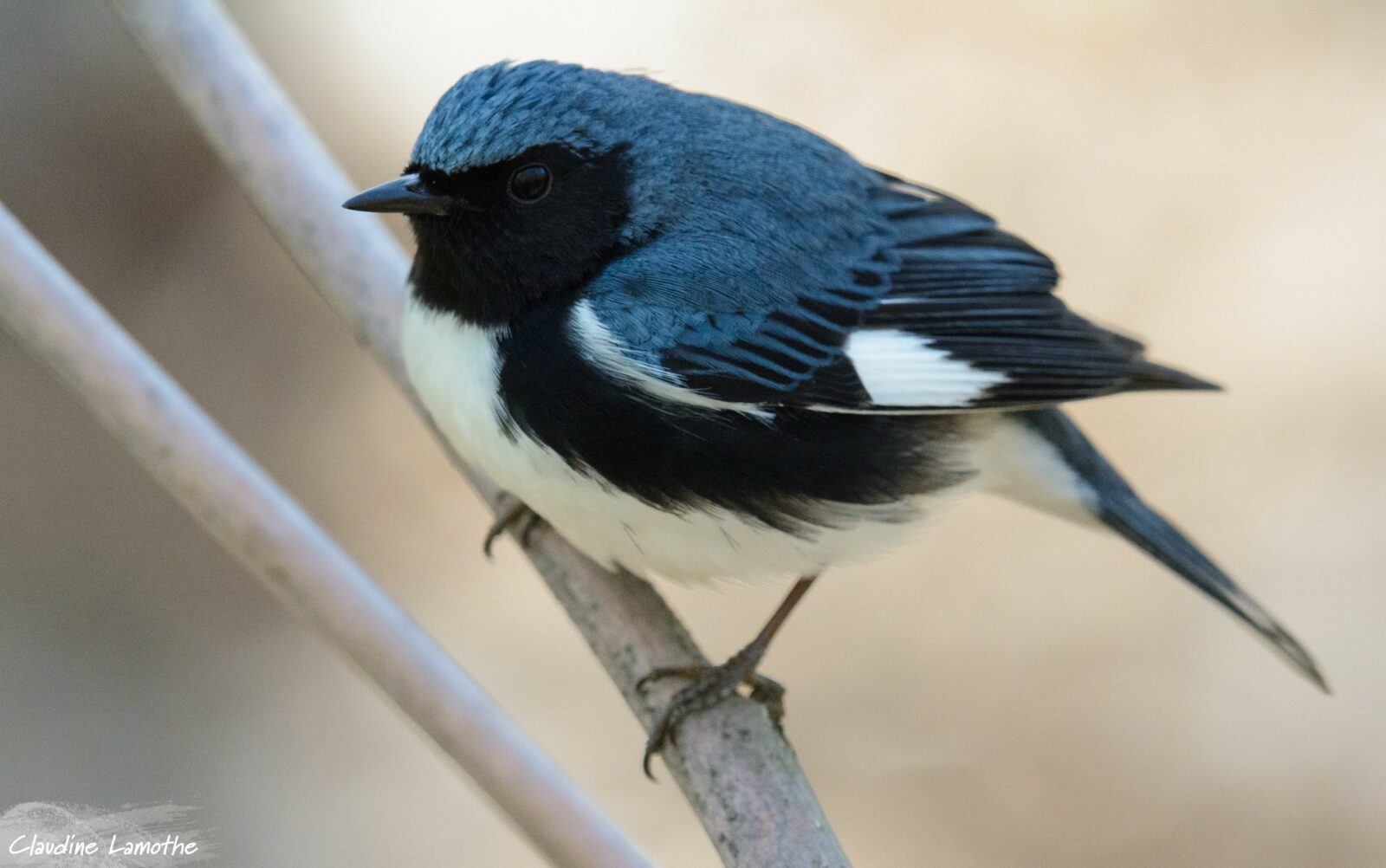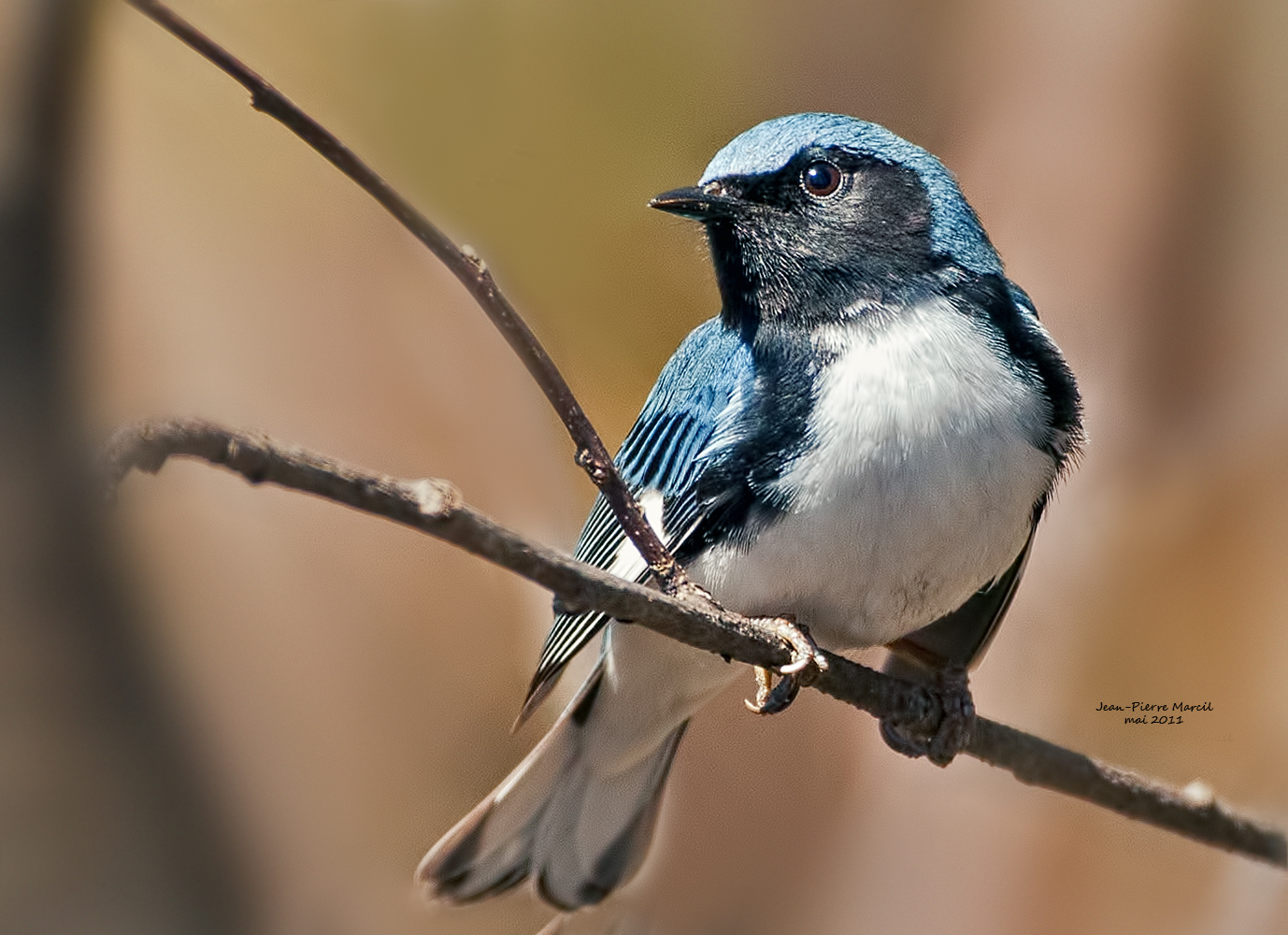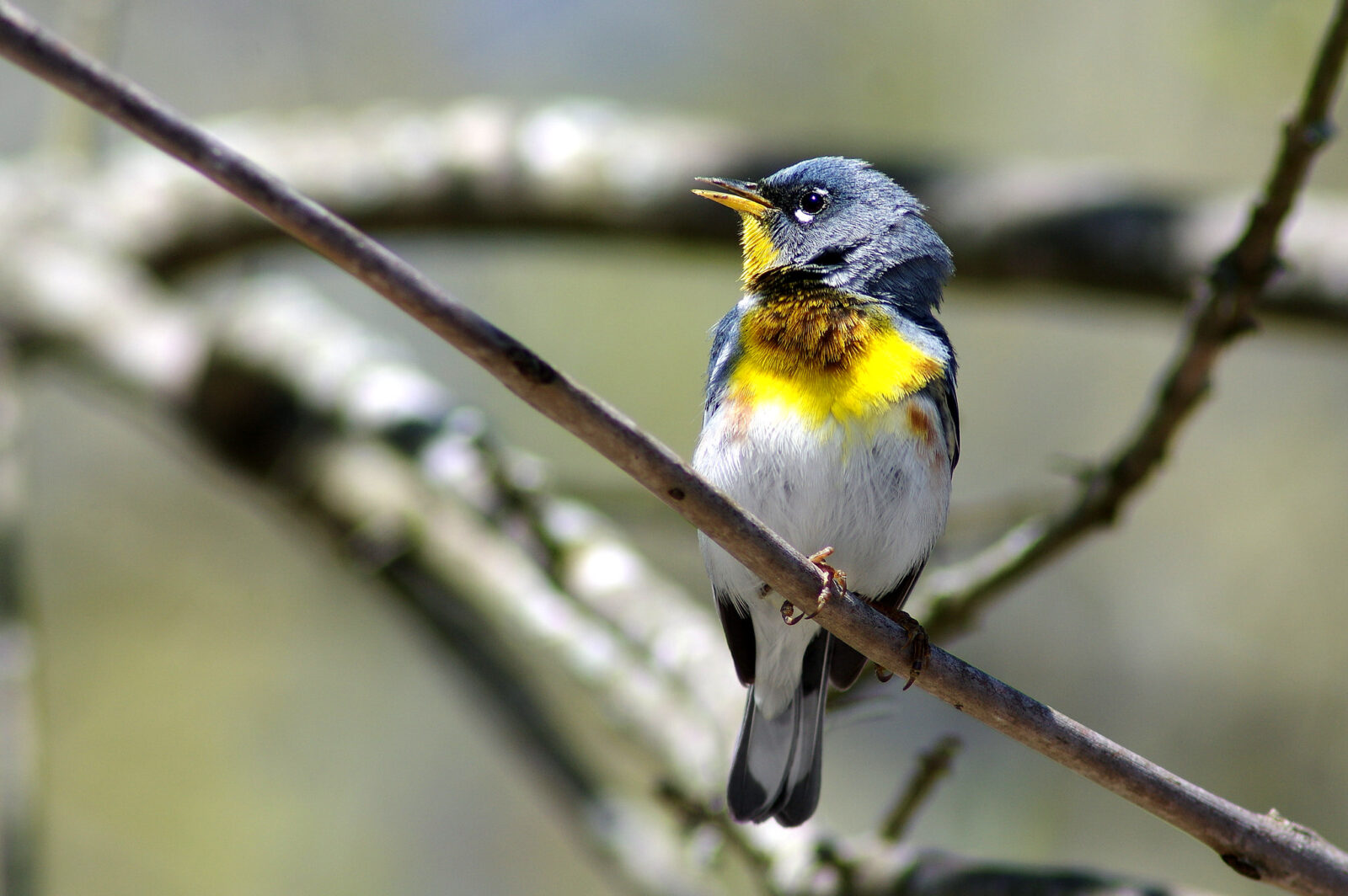Visit the Virginia Bird & Wildlife Trail to View Migrating Birds

Peregrine Falcon. Photo by Ron Knight.
By Jessica Ruthenberg, Watchable Wildlife Biologist, DGIF
Each fall in Virginia, birds of prey (also known as raptors) and small songbirds, called warblers, travel southward through Virginia along the Atlantic Flyway. These magnificent birds have left their northern breeding grounds and are heading south for the winter. Along the way, they stop-over in Virginia to refuel and rest before they continue their southward journey, making the availability of high quality habitat vital to their livelihood. Their arrival marks the start of the fall migration peak in Virginia, which will continue through mid-October.
Raptors migrate during the daytime, providing great viewing opportunities as they soar high in the air. The best places to see migrating raptors this time of year is at Virginia’s designated fall Hawkwatch sites, the majority of which are located in the mountains. There are often Hawkwatch staff or volunteers in place to help you in spotting and identifying the birds, while other staff or volunteers are busy counting and recording the numbers of each species observed. These Hawkwatches provide their data to the Hawk Migration Association of North America (HMNA), which keeps a database on hawk migration from nearly two hundred affiliated raptor monitoring sites throughout North America.

Black-throated Blue Warbler. Photo by Claudine Lamothe.
Unlike raptors, warblers are night migrants. As they pass through the Commonwealth, they seek patches of forest to stopover during the day. Places like Virginia’s National Wildlife Refuges, State Parks, State Wildlife Management Areas, and local nature trails can be ideal places to spot these migrants. Habitats at these sites provide protective cover, making a safe place for the birds to rest. They also offer abundant insects, a critically nutritious food source for the birds to replenish their energy before heading off on the next leg of their journey.
Virginia’s Eastern Shore is a particularly special place to view autumn’s migrating raptors and warblers. Bordered to the west by the Chesapeake Bay and to the east by the Atlantic Ocean, the Eastern Shore of Virginia is the long, slim southern tip of the larger Delmarva Peninsula. The unique shape of the peninsula and its position along the Atlantic Flyway creates a funnel-effect that concentrates migrating birds in the relatively small area of its southern tip as they are traveling southward. Research has documented the southern tip of Virginia’s Eastern Shore as a hemispherically important stopover habitat for neotropical migratory songbirds.

A kettle of Broad-winged Hawks. Photo by Jamie Stewart.
If you can’t make it to a Hawkwatch site or the Eastern Shore, but still want a chance to observe migrating birds this fall, there are many other opportunities in Virginia to do so! Many warblers follow the path of the Appalachian Mountains, which provide rich habitat and dense protective cover for their migration stop-overs, and some birds even meander through the central portion of the state from one habitat patch to the next.
Don’t miss your chance this fall to get outdoors and view fall migration. Check out the list of Virginia Bird & Wildlife Trail sites below for top locations where raptors and warblers can be observed during Virginia’s fall birding season, then get out and go! Remember the best time to see these fall migrants is now through mid-October.
Virginia Hawkwatch Sites
Kiptopeke Hawkwatch – Located at Kiptopeke State Park and operated by Coastal Virginia Wildlife Observatory (CVWO), is a renowned fall hawk-watching site, especially for viewing migrating falcons, including merlins and peregrine falcons. CVWO reports daily records of both species in the hundreds.
Snickers Gap Hawkwatch – Located 20 miles west of Leesburg, Virginia, is at its best from September 14 – 21 when thousands of migrating birds of prey stream past overhead. The most widespread species seen is the broad-winged hawk, which may occur in the thousands.
Rockfish Gap Hawkwatch – On the grounds of the Inn at Afton, just east of Waynesboro, Virginia. In operation from August 15 – November 30. Broad-winged hawks fly over in the greatest numbers, but other hawks may be seen, such as sharp-shinned, Cooper’s, and red-tailed hawks.
Hall Road, Raptor Viewing Stop and Overlook – Although not an official hawkwatch site, these two spots on Hall Rd, atop the ridge of Sinking Creek Mountain in Roanoke County, provide excellent vantage points for viewing fall’s migrating raptors. Turkey and black vultures, red-tailed, broad-winged, Cooper’s and sharp-shinned hawks all occur regularly.
Harvey’s Knob Overlook – Located near Roanoke, Virginia on the Blue Ridge Parkway, between mile markers 95 and 96. Mid-September brings large numbers of broad-winged hawks, plus some osprey and bald eagle. Sharp-shinned and Cooper’s hawks peak during October. Towards late October and into November look for red-tailed and red-shoulder hawks.
Buffalo Mountain Natural Area Preserve – This Preserve, surrounding Buffalo Mountain in Floyd County, has a steep one-mile trail that reaches the summit. The summit’s clearings and 360 degree view provide a good spot to watch hawk migration in the fall where broad-winged hawks stream by as well as some osprey, sharp-shinned, Cooper’s, and red-shouldered hawks.

Black-throated Blue Warbler. Photo by Jean-Pierre Marcil.
Top Virginia Locations to see Migrating Warblers in the Fall
Virginia’s Eastern Shore (sites are listed north to south)
- Chincoteague National Wildlife Refuge
- Savage Neck Dunes Natural Area Preserve
- Cape Charles Natural Area Preserve
- GATR Tract of Mockhorn Island Wildlife Management Area – Your Restore the Wild Membership gets you in!
- Magothy Bay Natural Area Preserve
- Kiptopeke State Park
- Eastern Shore of Virginia National Wildlife Refuge

Palm Warbler. Photo by Kenneth Cole Schneider.
Northern and Central Virginia
- Banshee Reeks Nature Preserve
- Leesylvania State Park
- James River Park
- Henricus Park/ Dutch Gap Conservation Area
Appalachian Mountains (sites are listed north to south)
- Sky Meadows State Park
- Thompson Wildlife Management Area – Your Restore the Wild Membership gets you in!
- Switzer Lake Area
- Ivy Creek Natural Area
- Spruce Creek Park
- Natural Bridge of Virginia
- Fenwick Mines Recreation Area
- Pandapas Pond
- Heritage Community Park and Natural Area
- Claytor Lake State Park
- Homestead Road/ Fairwood Valley
- Grayson Highlands State Park
- Hidden Valley Wildlife Management Area – Your Restore the Wild Membership gets you in!

Northern Parula. Photo by CheepShot, Flickr Creative Commons.
How to Help Migrating Birds on their Journey
Migrating birds heading south face a variety of treacherous obstacles, but there are simple actions we can all take to help reduce the danger and ease their trek towards their wintering grounds.
- Spread the word about Restore the Wild – Thank you for already joining DGIF in their mission to protect and restore wildlife habitat. We ask you to continue your support for this membership by spreading the word and encouraging friends and family to join as well! Membership dollars will support a variety of DGIF’s habitat projects that benefit migrating birds as they stop in Virginia each fall to rest and refuel on their southward journey, as well as on their return visit through Virginia each spring. Declines in habitat availability and quality are amongst the biggest threats facing migrating birds. With your membership support, the DGIF can continue its efforts to support migratory birds with essential habitat.
- Support bird habitat on your property by simplifying your fall routine– do not mow old fields, leave your fallen leaves or rake them into garden beds as mulch, leave dry stalks and seedheads standing in your garden beds, plant a native shrub or tree, and remove any non-native invasive shrubs or trees.
- Keep pet cats indoors. According to the 2014 State of the Birds report, free-ranging outdoor domestic cats in the U.S. collectively kill approximately 2.4 billion birds every year, making them the number-one direct, human caused threat to birds.
- Make your windows obvious. National Audubon Society estimates that between 100 million to 1 billion birds a year die from collisions with reflective or clear glass. Windows confuse birds by reflecting the surrounding landscape and therefore appearing as usable habitat or by appearing as clear, open space. Many tips for preventing bird window strikes are available: try these bird-friendly window solutions.



